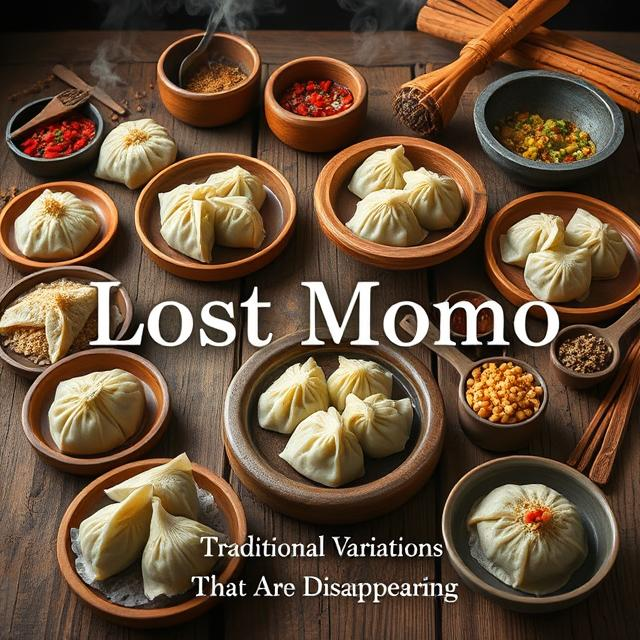
Lost Momo Recipes: Traditional Variations That Are Disappearing!
Momos, the beloved dumplings of the Himalayan region, have evolved over the years, with modern variations dominating menus. However, many traditional momo recipes that were once cherished by different cultures are slowly disappearing. These lost momo recipes carry rich histories, unique ingredients, and distinct cooking techniques that deserve to be remembered. Let’s take a journey through some of these hidden momo recipes and their significance.
1. Churpi Momos—The Himalayan Delight
Origin: Nepal & Tibet
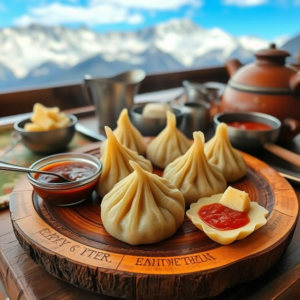
Churpi, a hardened Himalayan cheese, was once a popular filling for momos in remote mountain regions. Rich in protein and with a chewy texture, churpi momos had a distinct smoky flavor, often paired with yak butter for added depth. These momos were favored for their high nutritional value, providing much-needed sustenance in the cold mountainous climates. Due to the commercialization of dairy and cheese, churpi momos have become rare, with fewer households preparing them. Today, finding authentic churpi momos requires a trip to remote villages where traditional recipes are still preserved.
2. Buckwheat Momos—The Gluten-Free Heritage
Origin: Bhutan & Northeast India
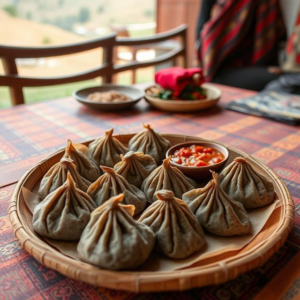
Before refined flour (maida) became widespread, buckwheat was the go-to ingredient for making momo wrappers in Bhutan and parts of India’s northeast. This gluten-free variation had a nutty taste and was considered healthier than regular momos. The dense, slightly chewy texture of buckwheat momos made them a hearty meal, often enjoyed with fermented chili chutney. Unfortunately, with the rise of processed flours, this version has almost disappeared from everyday consumption, only prepared by a handful of communities that still hold onto their culinary traditions.
3. Shogo Momos—The Potato-Stuffed Treasure
Origin: Tibet

Shogo (meaning potato) momos were a simple yet hearty variation where mashed potatoes were used as the primary filling instead of meat or vegetables. This dish was particularly popular in high-altitude regions where potatoes were more accessible than grains. The creamy texture of mashed potatoes mixed with a touch of butter and Himalayan herbs created a comforting dish that warmed the soul. With changing tastes and urbanization, shogo momos are now a rarity, as they have been overshadowed by more commercially viable meat-based options.
4. Jhol Momos—The Soup Dumpling of Nepal
Origin: Nepal
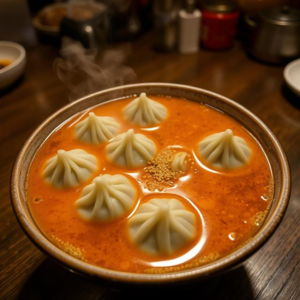
Jhol momos (momos served in a flavorful broth) have a long-standing history in Nepalese cuisine. While some variations of jhol momos are still found in Nepal, the traditional recipe is slowly vanishing. Earlier versions had a thinner, more delicate wrapper and were served in a fermented, tangy soup made from sesame, tomatoes, and local spices. The broth, rich in depth and complexity, was made by slow-cooking ingredients for hours. Modern adaptations often simplify the process, losing the depth of flavors that once defined this dish. Authentic jhol momos can still be found in select eateries that remain dedicated to traditional cooking techniques.
5. Fish Momos—The Coastal Rarity
Origin: Sikkim & Bengal
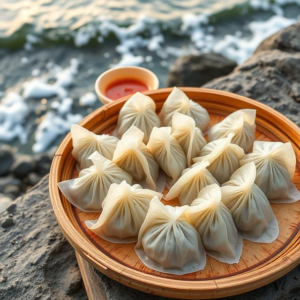
Unlike the more common chicken or pork momos, fish momos were once widely made in regions near rivers and coastal areas. Using fresh fish, spices, and herbs, this variation provided a unique seafood twist that set it apart. The delicate sweetness of fish complemented by bold Himalayan spices created a one-of-a-kind dumpling. However, due to the popularity of other meats and changes in eating habits, fish momos have become increasingly rare, with only a few communities keeping this tradition alive.
6. Millet Momos—The Ancient Superfood Dumpling
Origin: Ladakh & Tibet
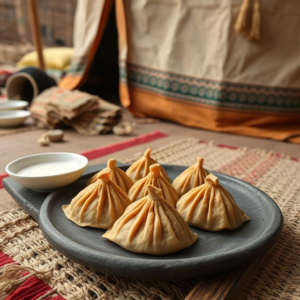
Millet was historically used for making momo wrappers, offering a fiber-rich, nutritious alternative to wheat-based versions. These momos had a slightly earthy flavor and were known for their health benefits. Millet momos were commonly eaten by nomadic herders and mountain dwellers who valued their high energy content. However, as modern wheat-based momos gained popularity, millet momos faded into obscurity. Today, they are slowly making a comeback among health-conscious food lovers seeking gluten-free options.
7. Tandoori Momos—The Traditional Charcoal-Grilled Version
Origin: India (Tibetan Influence)
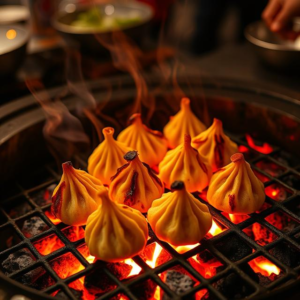
Before the modern adaptation of tandoori momos in restaurants, traditional tandoori momos were grilled over open charcoal fires in local Tibetan communities. The smoky, charred taste made them unique, offering a rustic and flavorful twist on the classic dumpling. However, the time-consuming preparation and shift towards deep-frying have led to this version being overshadowed by its restaurant-style counterpart. Finding authentic tandoori momos today requires seeking out street vendors or old-school Tibetan kitchens that still honor this age-old cooking method.
8. Bamboo Shoot Momos—The Aromatic Delicacy
Origin: Northeast India
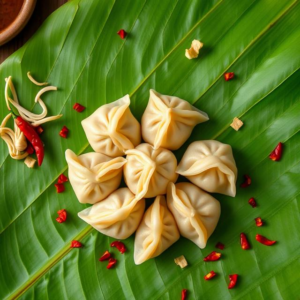
Bamboo shoot-infused momos were once a delicacy in the northeastern states of India, particularly in Nagaland and Manipur. The filling had a strong, earthy aroma and was often paired with fermented soybeans for an umami-rich taste. Bamboo shoots’ distinct flavor added a unique dimension to the momos, making them a treasured dish in local communities. However, due to changing preferences and the decline in traditional cooking methods, this unique momo variety is slowly disappearing.
Why Are These Traditional Momos Disappearing?
- Urbanization and Fast Food Culture: Modern lifestyles favor quick and easily available momo variations over slow, traditional recipes.
- Ingredient Availability: Some key ingredients, like churpi and millet, are harder to find in urban areas.
- Commercialization of Food: Mass production has led to standardized momo recipes, reducing regional and historical diversity.
- Changing Palates: Younger generations are more accustomed to restaurant-style momos with modern fillings and flavors.
Preserving the Lost Momo Heritage
To keep these traditional momos from disappearing completely, food enthusiasts and chefs can:
- Promote & revive old recipes through social media, blogs, and culinary events.
- Encourage local farmers to grow heritage grains like millet and buckwheat.
- Experiment with traditional methods at home and share these flavors with newer generations.
Rediscover Authentic Momos with HungryQ!
At HungryQ, we’re passionate about preserving the authentic momos. Our diverse range of momos ensures that traditional and modern flavors are both celebrated. Whether you love classic steamed momos or adventurous fillings, we bring you the best of both worlds. Explore real flavors, only at HungryQ! 🥟✨













 Home
Home  Whishlist
Whishlist  Checkout
Checkout